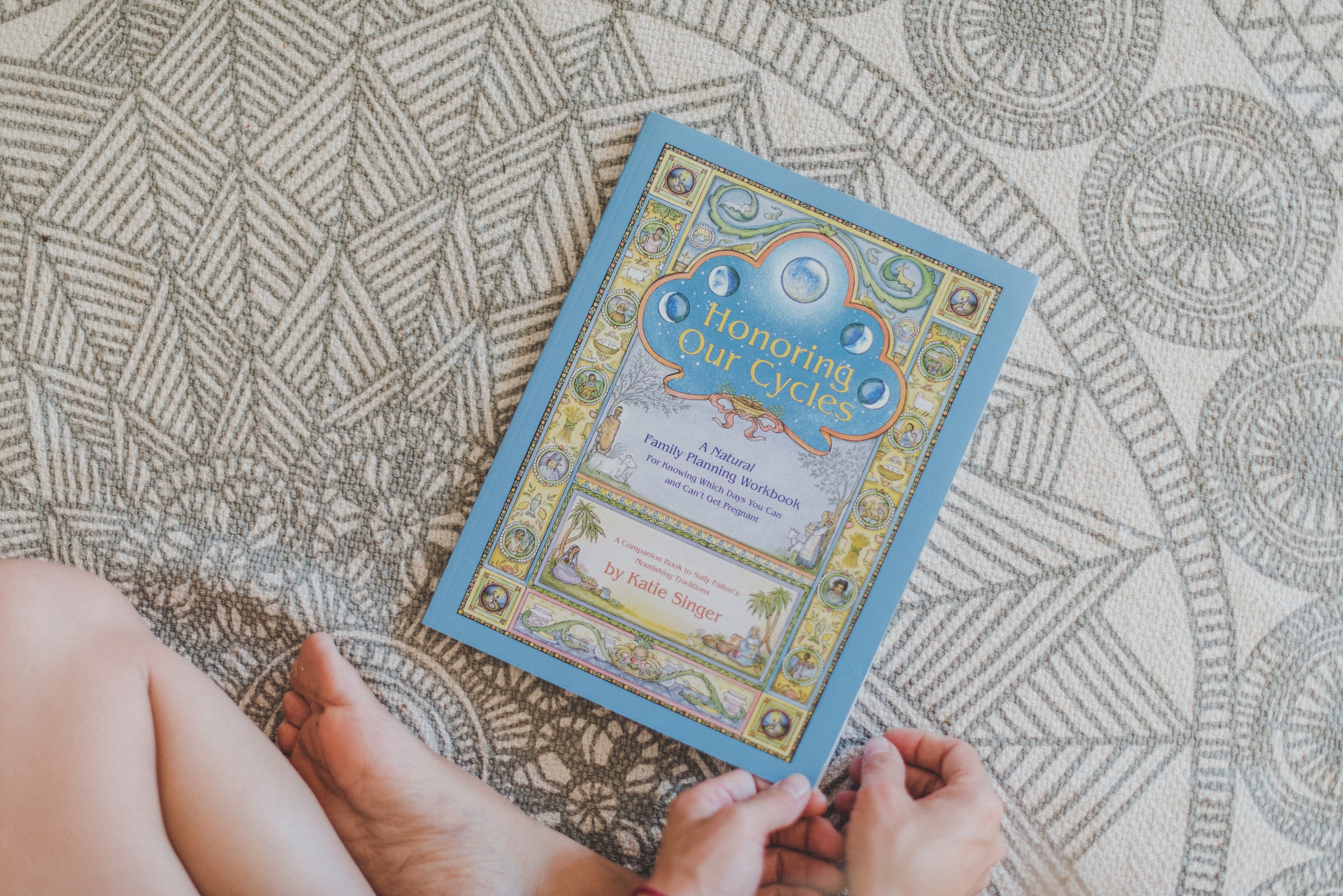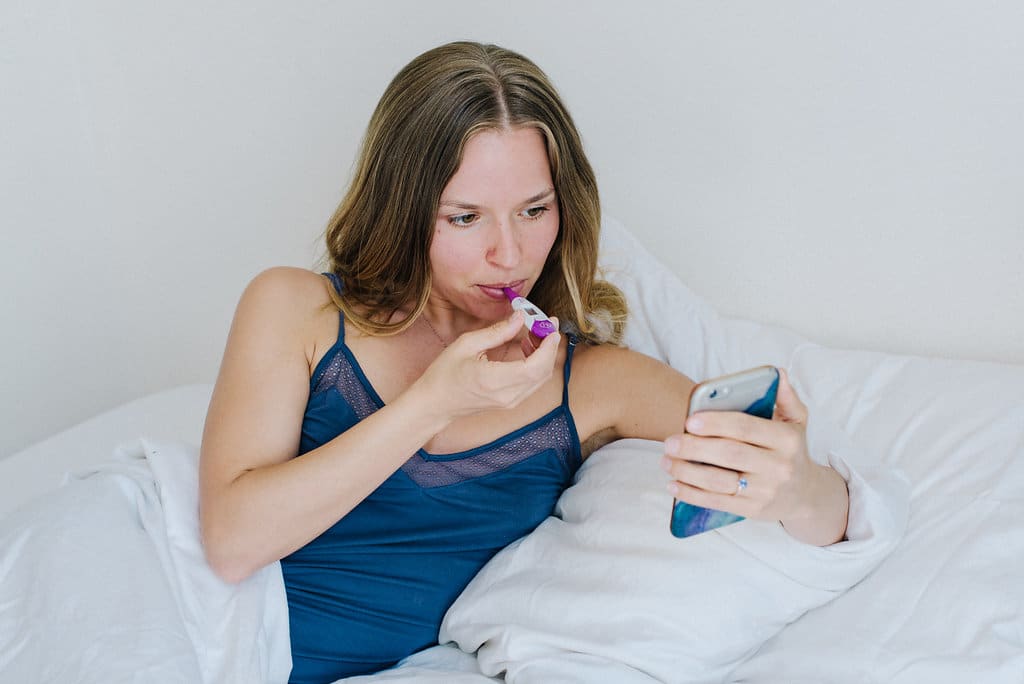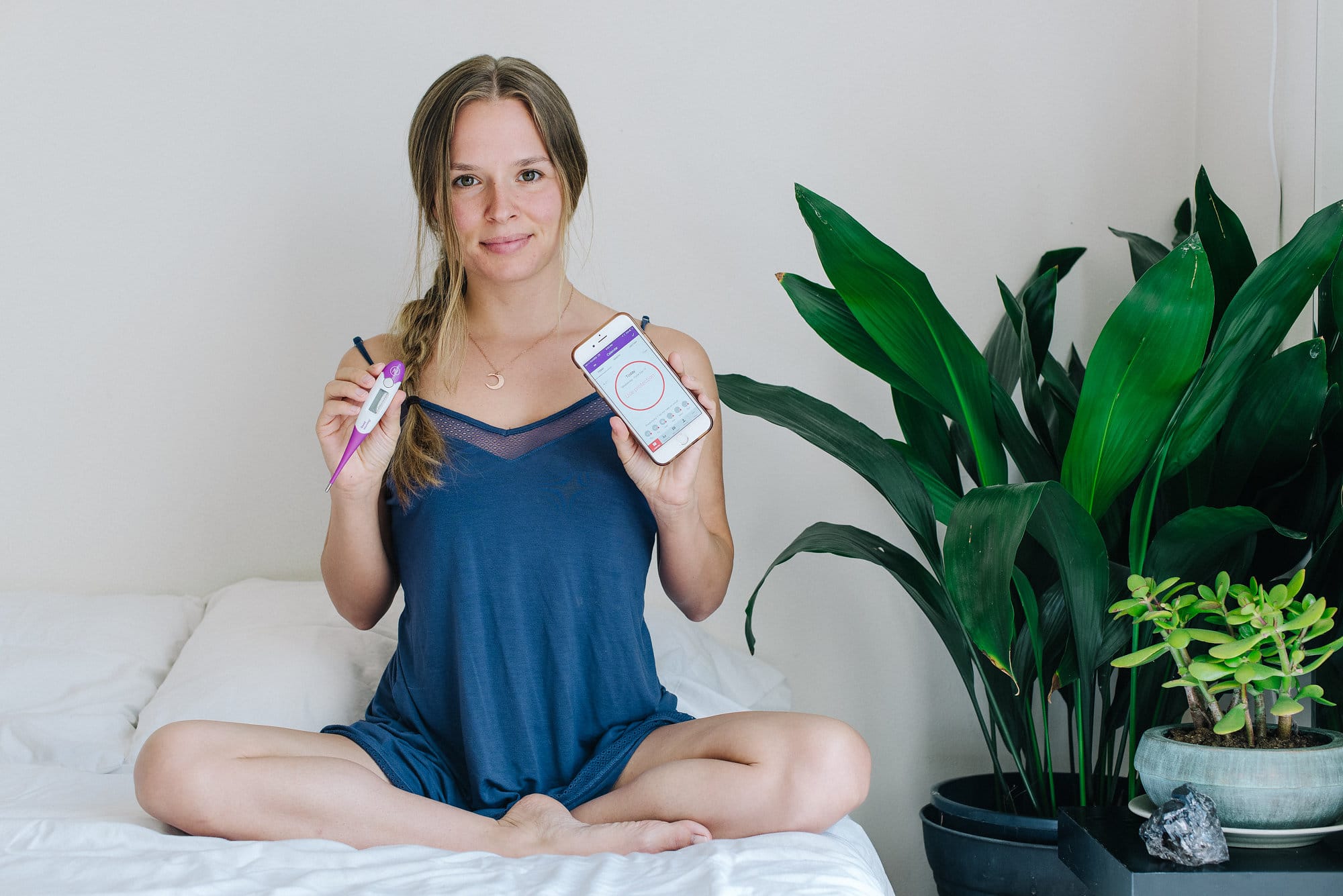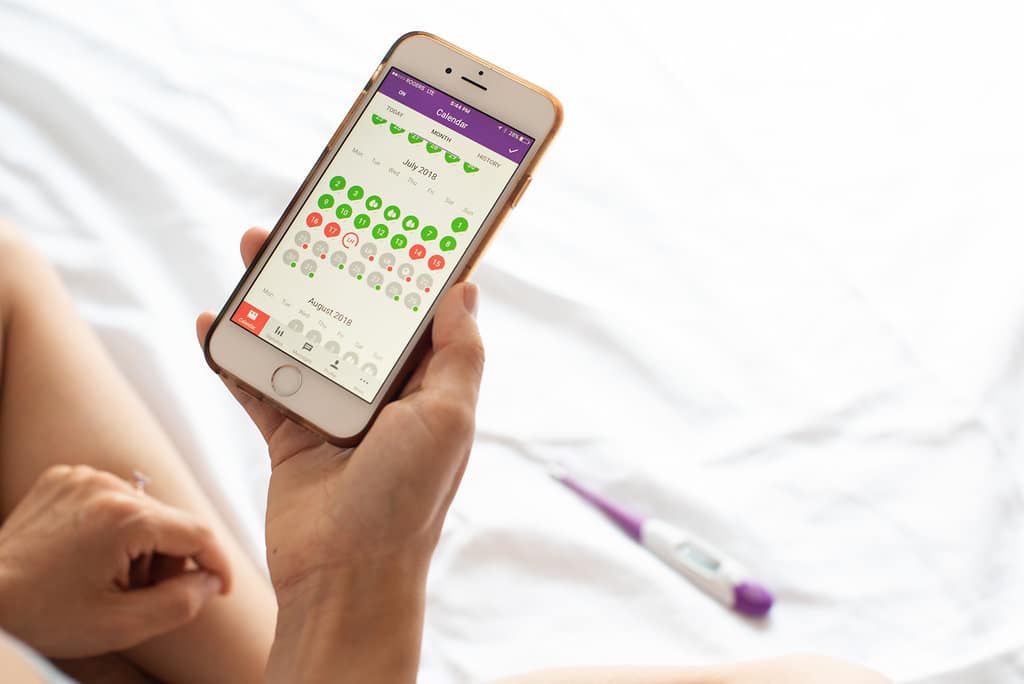Before I begin, I want to say that choosing a birth control method is a very intimate decision. We should all make our own decision based on our own personal needs and constitution. While my story is similar to countless other women who had a negative experience with the pill, I also acknowledge there’s a small (perhaps 1%) demographic of women who say birth control saved their lives – especially women who have PMDD (premenstrual dysphoric disorder), endometriosis or PCOS.
There are many alternative pathways to healing even these stubborn hormonal imbalances and the pill is certainly not the only solution, but for some women, it is the right choice. I have absolutely no judgment towards any woman who chooses the pill. My intention is to provide information and education for those who have chosen the pill without recognizing the potential side effects or perhaps aren’t aware of other options available to them.
When I was 15 years old I experienced debilitating menstrual cramps. After multiple hospital visits and nearly blacking out from pain during my cycle, a doctor prescribed me the birth control pill.
The horrible reaction that followed propelled me to spend nearly a decade of my life researching and looking for the most reliable natural birth control methods I could find. While on the pill, I began bleeding for more than a month straight. My body temperature rose, I was dizzy, sweating, and experienced extreme uterine cramps. After being taken to the hospital, the doctor told me the pill had stripped the lining of my uterus. My doctor’s solution at the time was to take 5 birth control pills a day. Needless to say, even at 15 years old, I did not take the doctors advice and instead ditched the pill forever.

Now for some Science! Here’s How the Pill Works… Studies are all linked below:
Each month, women’s bodies prepare to accept, nourish, and house a fertilized egg. During this phase in her cycle, an egg is released that may be fertilized by a man’s sperm. Hormonal contraceptives use man-made hormones to prevent these cycles.
The use of hormonal birth control impacts more than your chance of pregnancy. Typically, it affects users’ emotional, mental, and physical health. 33.8% of women that began using oral contraceptives stopped use after six months due to negative side effects (1). Other hormonal contraceptives – like the patch and the shot – often receive similar, negative reviews (2). In most cases, women experience weight gain, headaches, lower moods, and more during use (1).
Even after stopping the use of birth control, balancing the body’s ecosystem can take a long time. Depending on the time of hormonal contraceptive use, it can take up to several years to reset the body.
Hormonal contraceptives cause multiple changes in the womb to prevent pregnancy. The hormones changed are estrogen and progesterone. Both are regulated by the hypothalamus, the pituitary gland, and the ovaries. Hormonal birth control may make changes to one, or all, of the items below (3, 4):
- Changes in the cervical mucus to prevent sperm from passing
- Changes in the womb lining to prevent implantation of a fertilized egg
- Prevention of monthly ovulation
- Extension of the hormonal cycle
Negative Side Effects Caused by Hormonal Contraceptives:
1. Unusual Mental and Physical Changes
Hormonal contraceptives change your body’s physical appearance. In some cases, hormonal contraceptives change one’s voice quality and fat mass gain (10). Weight gain is one of the top side effects reported by previous users of oral contraceptives (1). Weight gain was recorded in study participants regardless of activity levels. Ultimately, weight gain may be associated with hormonal contraceptive use.
Another common side effect of hormonal contraceptive use changes in mental and emotional well-being. Using the Psychological general Bodybuilding Motivation – Believe parallel bar exercises sheer build post-workout supplement: muscle growth formula? well-being Index (PGWBI scale), a study found that the majority of oral contraceptive users had a reduction in general well-being. The index measures an individual’s well-being by asking about their emotional state over the previous month. The study found that over three months of use, there was a significant reduction in the general well-being of users (11).
2. Imbalanced Gut Health
Hormonal contraceptives affect the hormones that regulate how your body runs. Sometimes, a hormonal contraceptive user unknowingly has a sensitive GI tract. After use, they notice that their digestive system has been negatively affected. Birth control use is shown to deplete nutrients from the body (8), increase the risk for irritable bowel disease, and increase risk of Chron’s disease (9).
Many users notice a change in their digestive system while using progesterone-only contraception. David Levinthal, a professor of gastroenterology at the University of Pittsburgh notes, “Progesterone tends to slow down contractions of smooth muscle, the type of muscle that lines the GI tract that’s important for its function and squeezing action.” Progesterone affects constipation before the period starts and looser stools during (6). When the digestive system is compromised, it affects other aspects of the body. The gut will affect nutrient absorption, the skin’s appearance, mood regulation.
3. Increased Risk of Disease
Hormonal contraceptive use and increased risk of disease is a big concern for many. Unfortunately, the use of hormonal contraceptives is linked to increased risk of a few diseases. It is important to know your family’s health history to avoid the occurrence of any of the following diseases. As hormonal contraceptive use has been linked to increases in:
- Heart attack (12)
- Blood clots (13)
- Cervical Cancer (14)
- Breast Cancer Risk (15)
During my short stint on the pill, I became rageful and reactive at the drop of a hat. I remember having a burst of anger pulse through me and throwing a hairbrush at my TV. At that moment I realized something was incredibly wrong. The birth control pill hijacked my hormones and turned me into a version of myself I could barely recognize.
In my own personal research, I discovered various herbal methods including inserting neem oil in the vagina after intercourse, taking pennyroyal, and Queen-Anne’s lace. But all of these proposed methods of birth control seemed too risky due to their own side effects. Herbs are very powerful, can be hard on the liver, and neem oil is too anti-bacterial for me to feel safe putting it in such a sensitive area on a frequent basis.

This approach tracks ovulation to time sexual activity outside of the fertile cycle. This approach is inexpensive, safe, and no side effects are included. There are many different approaches that can be used:
-
- Calendar Method – Requires tracking a varying cycle duration
- Standard Days Method – Requires tracking a standard cycle duration
- Symptothermal Method – Requires tracking one’s body temperature, secretions, and other signs of fertility
The challenge is, our cycles can fluctuate and change, and lead to unplanned pregnancies in much higher rates than on the pill. When my partner and I were looking for a more reliable way to prevent pregnancy, we purchased the Natural Cycles App and thermometer and I started tracking consistently.

The Natural Cycles app identifies days on which a woman infertile and fertile.
These days are determined based on how body temperature changes based on the body’s hormone levels (16). Using your hormone cycle, previous cycles, cycle irregularities, body temperature fluctuations, and sperm survival time, the app makes the symptothermal method effortless. Natural Cycles is the only certified contraceptive app because of the extensive research used to create their precise algorithm.
My partner Ben discovered Natural Cycles first and when he brought it to me, I was critical. First of all, the fertility awareness method is not new at all.
But when I dug a bit deeper into why the app was so successful, I realized there’s more too it than that. Natural Cycles has a huge data pool and designed an algorithm to be extremely precise. So precise and effective, they received FDA approval as a form of natural birth control.

How effective is the Natural Cycles App?
- The app has a perfect use failure rate of 1 in 100 women becoming pregnant each year for various reasons (either due to having unprotected intercourse on a red day or chosen method of contraceptive on a red day failing).
- It has a typical use failure rate of 7 in 100 which means 7 women will get pregnant in a year, but this is also due to not using the app in near perfect use.
Compare that to the birth control pill, where the difference is only slight (and yes, I know at least 5 women who have conceived multiple children while on the birth control pill) and tack on all of the very real side-effects and this app seems like a no-brainer.
Of course, there’s a risk because the app relies on changing our behavior. If we engage in unprotected love-making on a red day, we’re playing with fire. For some reason, whenever I’m ovulating, making a baby sounds like a really good idea!? What can I say, I’ve been hijacked by my hormones. So yes, using this app does require more awareness, a lot of consistency… and discipline!

In addition to taking my temperature every morning within the same two-hour window, I take ovulation tests monthly to pinpoint my ovulation day and get even more accurate results from the app and I also consistently monitor my cervical mucous.
Natural Cycles has a tiered status system in which you can reach a new status based on achievements like calibrating your thermometer, measuring consistently, taking LH tests and more. Given my competitive nature, it was my life’s mission to reach Star Cycler Status and become an Ambassador – so now I get the app free for life which saves me around $89 bucks a year. Jokes aside, in order for this app to really work (just like the pill) you have to be compliant. I like how the app is slightly gamified with different tiers of achievements to encourage perfect use.
Ultimately, this is helping my partner and me to stay on the same page about safe windows for love-making. We’re also confident this is going to be very effective for planning a pregnancy as well when the time comes. There are a lot of women who simply cannot or do not want to put artificial hormones, chemicals, or implants in their bodies, and it’s nice to know there are other options.
P.S. – I don’t make any money for sharing my review, or the discount code with you. I hope this article helped you understand your options better 🙂
Sources:
- https://www.ncbi.nlm.nih.gov/pmc/articles/PMC1903378/
- https://www.cyclebeads.com/blog/801/cdc-report-shows-women-highly-likely-to-discontinue-use-of-hormonal-contraceptive-methods
- https://www.webmd.com/sex/birth-control/birth-control-pills#1
- https://in.sofyclub.com/en/advice/period/03.html
- https://www.guttmacher.org/fact-sheet/contraceptive-use-united-states
- https://tonic.vice.com/en_us/article/ywx9w7/birth-control-asthma-stomach-pain
- https://www.health.harvard.edu/diseases-and-conditions/the-gut-brain-connection
- https://www.researchgate.net/profile/Gianfranco_Carlomagno/publication/249321690_Oral_contraceptives_and_changes_in_nutritional_requirements/links/02e7e5253a9ba2dfbd000000/Oral-contraceptives-and-changes-in-nutritional-requirements.pdf
- https://gut.bmj.com/content/early/2012/05/22/gutjnl-2012-302362.short, https://www.nature.com/articles/ajg2008475 , https://gut.bmj.com/content/46/1/140.1
- https://onlinelibrary.wiley.com/doi/abs/10.1097/00005537-200406000-0001, https://academic.oup.com/jcem/article/89/9/4364/2844411#61770712
- https://www.ncbi.nlm.nih.gov/pubmed/28433366
- https://www.nejm.org/doi/full/10.1056/NEJMoa003216
- https://www.bmj.com/content/339/bmj.b2890.full.pdf+html, https://www.bmj.com/content/339/bmj.b2921.full.pdf+html , https://www.bmj.com/content/323/7305/131
- ) https://www.ncbi.nlm.nih.gov/pmc/articles/PMC2074516/?page=7
- http://cebp.aacrjournals.org/content/11/11/1375.short
- https://www.naturalcycles.com/en/faqs
Other Non-Referenced Sources:
- https://www.ncbi.nlm.nih.gov/pmc/articles/PMC3108408/
- https://in.sofyclub.com/en/advice/period/03.html
- https://www.birthcontrol.com/

